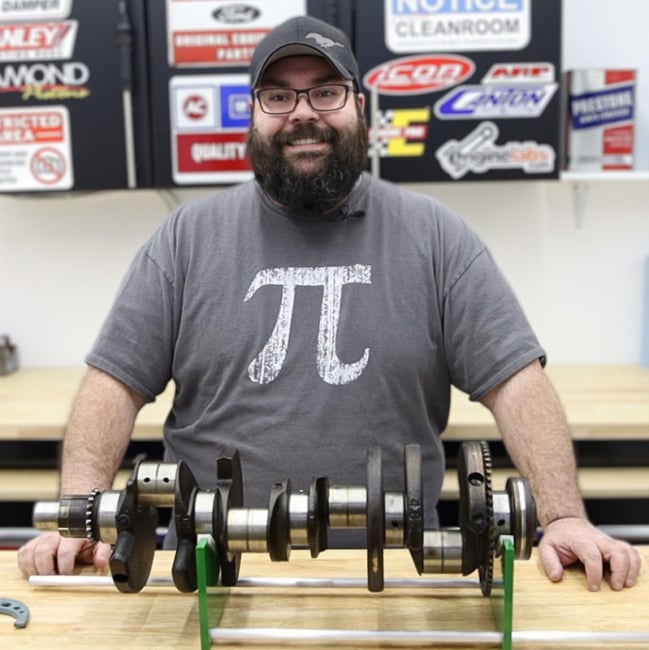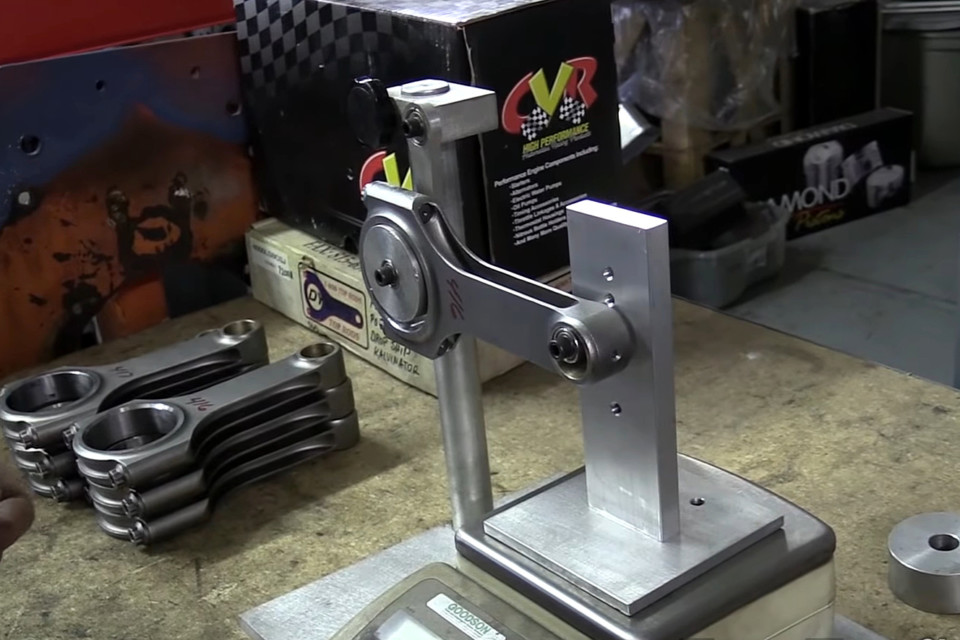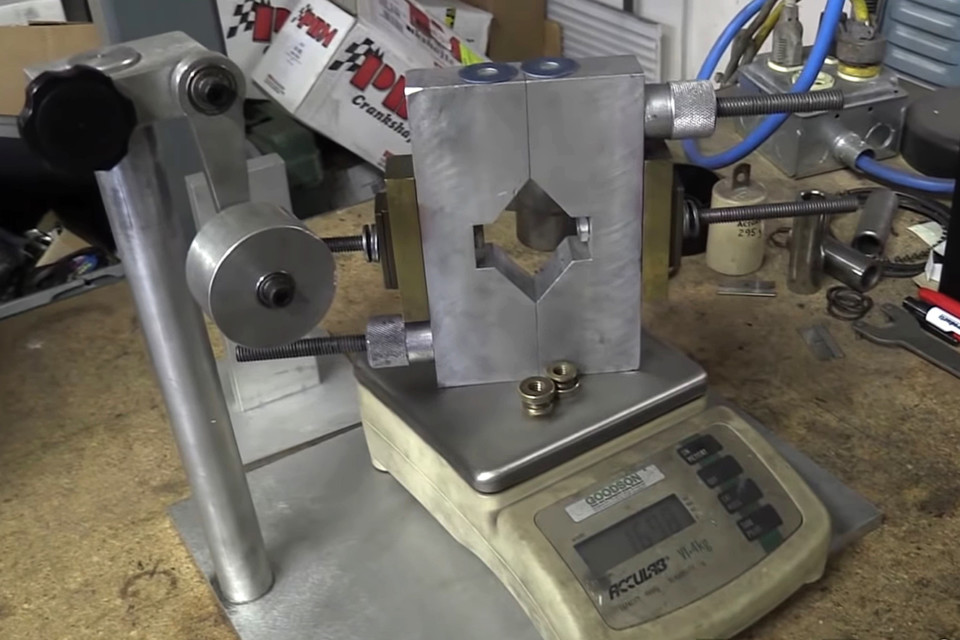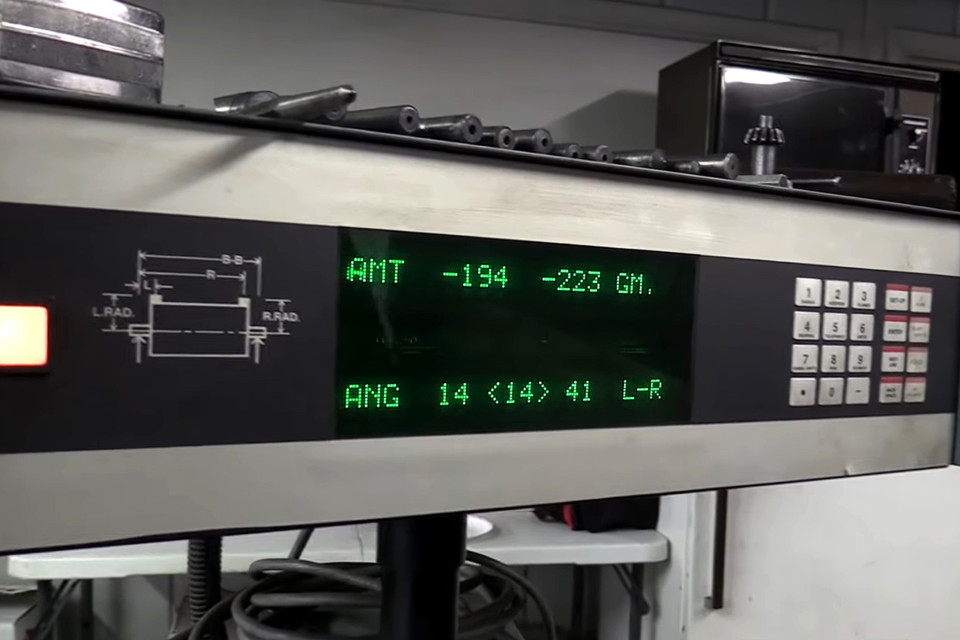I am building an off idle 383. It will go into a street car. It will never be raced. It should never be necessary for it to exceed 5,500 RPM.
Now for the questions. I am considering using an Eagle, street performance rotator assembly kit. It is advertised as being balanced. The machine shop is telling me that I should pay them $240.00 to balance it because Eagle's balance will be off by as much as 2 grams.
I would like to know if anyone has had problems with the balance on Eagle assemblies and if 2 grams is going to cause an issue with a low RPM engine. Thank you, Tim
from what I've seen in the past EAGLES balanced assembly's are not as well balanced as they could be and yes, your machine shop is probably correct.
personally I've found the SCAT rotating assemblies to be a better value with closer tolerances
that being stated I don,t think you would have major issues if you carefully verify clearances , and installed it without additional,balance work.
(personally Id cough up the extra $240 as insurance the jobs done correctly, it beats pulling it down later
Its up to the guy who assembles or builds an engine to verify that the machine work on any components been done correctly,
theres unfortunately a good percentage of machine shops that don,t employ people that have the skills and experience,
or the tooling to do the work correctly, or in some cases and desire or capacity to accurately measure the components accurately,
before and after precision machine works been done.
I'd bet 90% plus of the people who have a machine shop do precision work on any major engine component, like that
would have naturally assumed that the precision machine work was done correctly,
and simply assembled the engine without thinking a second about that work being done correctly.
this is one reason I strongly suggest most serious engine builders may want to have some precision,measuring tools,
and spend the time and effort to check that machine shop work you paid good money for, was in fact, done correctly ,
taking the time too verify the precision machine work was done correctly,
takes a good deal of the time required, in any engine build
(vs slapping parts together out of the box and wondering why it never quite runs up to your expectations)
and yes you probably could use the block in its current condition and find the engine runs,
and most people would never know the engines measurements were not correct or why the engine did not produce power to its full potential,
and the results might be so close that it would hardly matter ,too most car/engine owners.
but that engine block machine work ,being off specs, does not mean its been built correctly either
Video: How An Engine’s Rotating Assembly Is Dynamically Balanced

By
GREG ACOSTA OCTOBER 03, 2018
An engine’s rotating assembly is nowhere near “lightweight.” Sure, you can get a “lightweight” crank and rods, but that’s an extremely relative term. The fact is that you have a large mass spinning at significant speeds, and that means that even the slightest imbalance in the assembly will be magnified many times over.
On the minor end of the spectrum, an imbalanced (or improperly balanced) rotating assembly can lead to annoying vibrations felt inside the vehicle. On the opposite end of the spectrum, a significant enough imbalance can lead to high-speed unplanned disassembly of the engine, while it’s still in the engine bay.
Knowing how critical it is to have your rotating assembly balanced, most people undertaking a performance build will accept the extra cost associated with the task and have it done. However, do you know what’s actually happening when the assembly is “balanced”? YouTuber
Eric The Car Guy put together a comprehensive video which not only shows the process in detail, but explains what is going on as they balance his Forged 302 Windsor rotating assembly.

When weighing the rods, the big end and the small end are weighed separately as the ends move in different manners. Once all of the rods have been weighed, step one on the overall balancing process is to get the group of rods to within 1 gram of each other.
Step one of the process is to weigh both the “big end” and “small end” of each individual connecting rod. Each end is moving in a different manner – the big end rotates, and the small end reciprocates – so the weights of the individual ends is important. As Eric points out in the video, with today’s manufacturing processes, getting eight connecting rods to be only a few grams apart from one another, out of the box, is far more common these days, and shooting for the +/- 1 gram variance is an easier task.
Once the rod weight measurements are completed, and the group of rods weight-matched, the whole assembly for one cylinder – connecting rod, wrist pin, piston, and piston rings – is weighed and a little math applied, to create the target weight for the bobweight. The bobweight is a weighted clamp which will simulate the two rod and piston assemblies which will normally ride on each crankshaft journal (in a V8 application). Once the target weight is achieved, the bobweight is attached to the crankshaft before it is spun up to speed on the balancing machine.

The bobweight is carefully calibrated to simulate the weight that will be on each crank journal (two complete rod and piston assemblies, in this case). It will then be bolted onto the crank journal for spin balancing.
In an externally balanced application, the balancer and the flywheel or flexplate needs to be mounted on the crankshaft, as they play an integral part of the balancing equation. Once those are mounted on the crankshaft and the bobweights are affixed to the four crank journals, they can actually spin the assembly up.
One the machine goes through its technical magic, it tells the machinist how much weight needs to be added or removed, and where that weight is needed, in three dimensions. With that information, the machinist can then drill holes to remove weight, or drill holes and press or weld in heavy metal slugs (which are heavier than the removed material) to add weight.
Once the assembly is balanced within 1 gram or better, it is called good, and ready to be installed in the block. While this video is a bit on the lengthy side, it offers a great look inside of a very common process you may or may not be intimately familiar with.

This is the initial readout from the balancing machine. It is indicating that 194 grams needs to be removed from the front of the crank at 14 degrees of crank rotation, and 223 grams need to be removed from the rear of the crank, at a radial location of 41 degrees.
related threads
http://garage.grumpysperformance.com/index.php?threads/precision-measuring-tools.1390/#post-68861
http://garage.grumpysperformance.co...ing-parts-and-a-logical-plan.7722/#post-68651
http://garage.grumpysperformance.com/index.php?threads/finding-a-machine-shop.321/#post-59253
http://garage.grumpysperformance.com/index.php?threads/block-prep.125/
http://garage.grumpysperformance.com/index.php?threads/parts-prep-cleaning.6255/#post-51146
http://garage.grumpysperformance.com/index.php?threads/how-to-find-a-decent-machine-shop.800/
http://garage.grumpysperformance.com/index.php?threads/bare-minimum-tools.11026/#post-51843
http://garage.grumpysperformance.com/index.php?threads/machine-shop-sequencing.4460/#post-11720
READ THESE THREAD's
and don,t skip the sub linked info
http://garage.grumpysperformance.com/index.php?threads/engine-balancing.3900/
http://garage.grumpysperformance.com/index.php?threads/engine-balancing.3900/#post-57940



